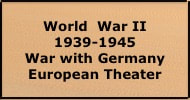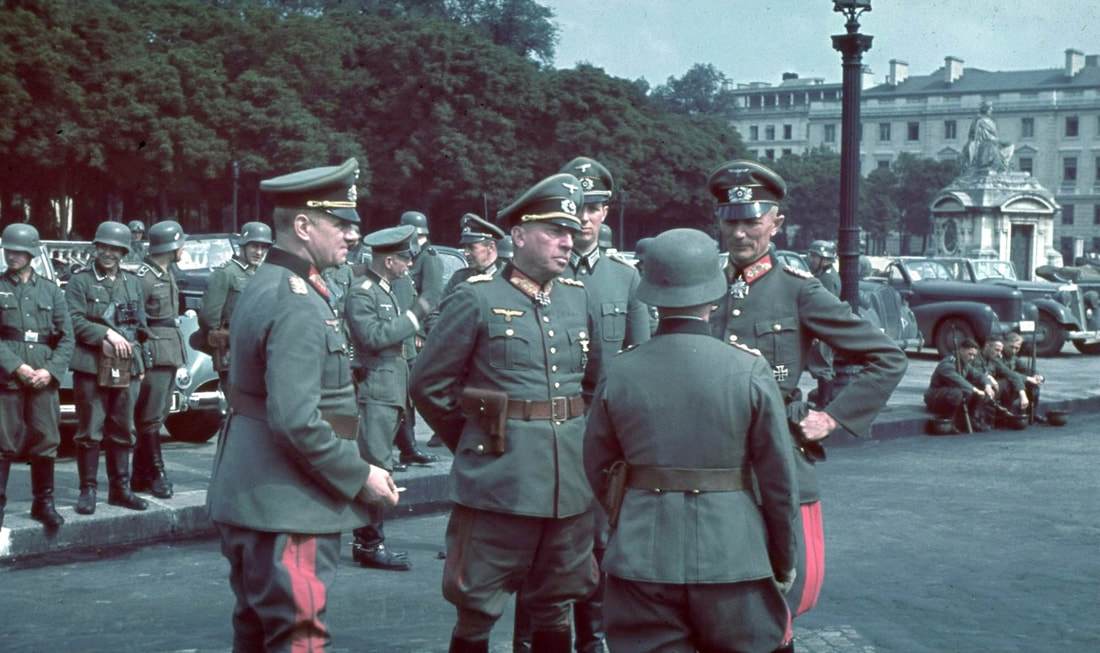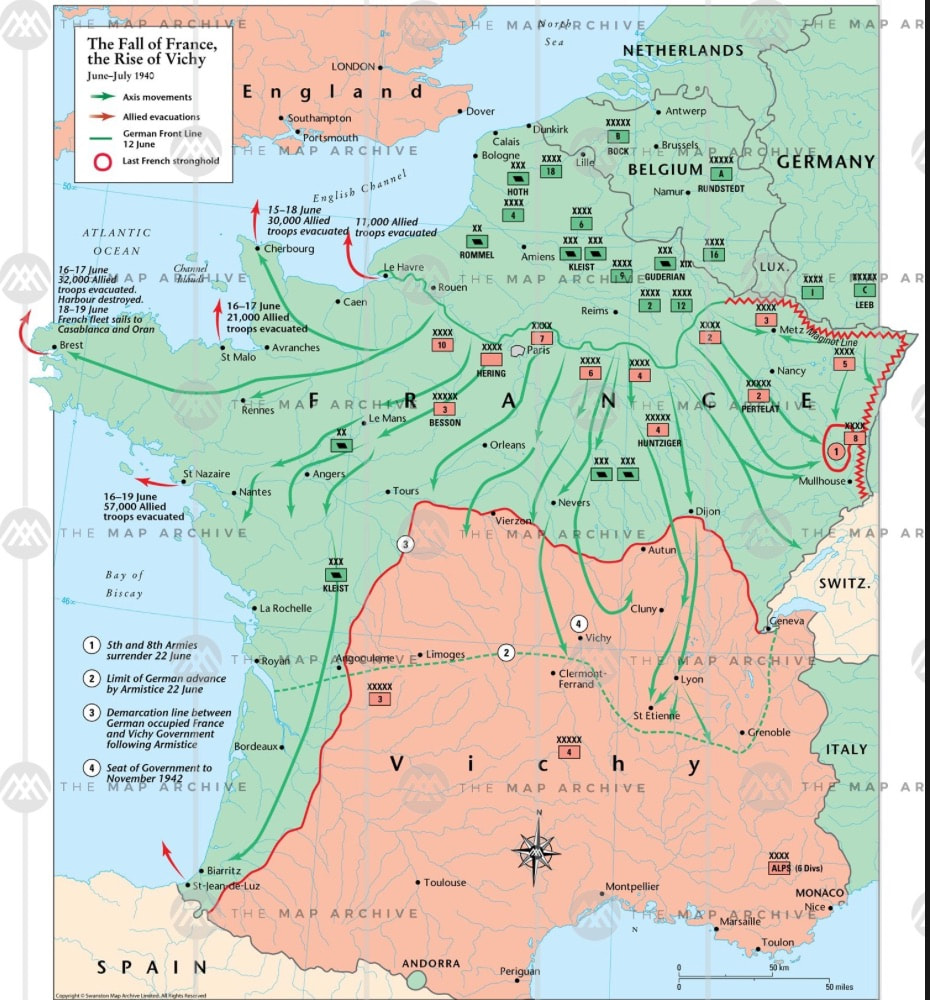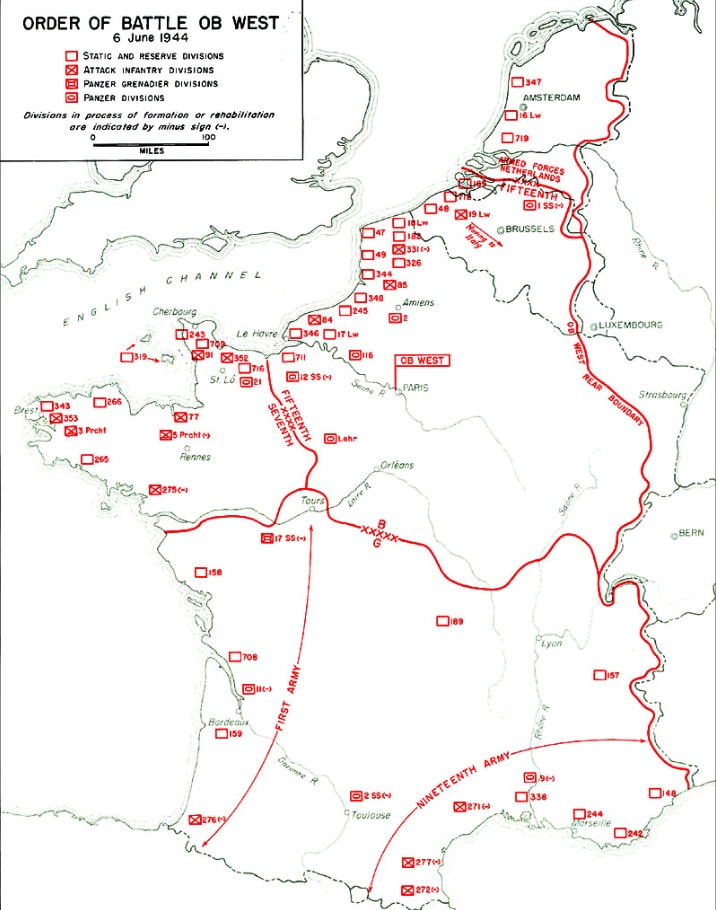bigpigeon.us webpage WW II Germany > The ETO > ETO Overview > Background, © 2023 by Robert A. Christiansen, updated by RAC 9 Sep 2022.
I hope the following will help visitors better-understand the European Theater context.
I hope the following will help visitors better-understand the European Theater context.
The 1940 Defeat of France
|
In May and June of 1940, in what was called the Blitzkrieg, the German army overran much of France along with the smaller nearby countries of the Netherlands, Belgium, and Luxembourg.
In addition to the well-known evacuation of British and French troops from Dunkirk, around 150,000 Allied troops escaped via other French ports. A junior French general, Charles de Gaulle, fled to London where he began efforts to rally the French people. Over the next four years, General de Gaulle became the leader of an ad hoc French government in exile, along with a military arm of several divisions. As part of the terms of the June 1940 armistice between France and Germany, much of southern France was set aside as Vichy France, an area administered by a new French government based in the small city of Vichy. The Vichy government was sympathetic to German goals. The Germany army, which had penetrated part way into the Vichy region in June 1940, withdrew to occupied France. |
The German Military Presence in France, 1940 - 1944
- Note from the above map that from 1940 onward German forces occupied the entire Atlantic coast of France. This allowed German submarines to be based at French naval installations on the Bay of Biscay, giving U-boots easy access to their Atlantic hunting grounds.
- Expecting a future Allied invasion, in 1942 Germany began construction of the Atlantic Wall, shore defensives that were especially elaborate along the most-likely future invasion beaches.
- In November 1942, the German army occupied Vichy France in response to the Anglo-American invasion of Vichy-controlled Morocco and Algeria in North Africa.
Germany Armies in France - June 1944
|
In the spring of 1944, four German armies waited on the coast of France for the impending Allied invasion.
The words OB West on the accompanying map abbreviate Oberbefehlshaber West, the German High Command in the West. General Gerd von Rundstedt was OB West commander on D-Day. General Erwin Rommel commanded Army Group B, which consisted of the 7th and 15th Armies. The German 7th Army went through several commanders during ETO operations. The first died of a heart attack, the second was shot in the jaw but survived. |
The Anglo-American Alliance
- Winston Churchill, British prime minister from 1940-1945, had long warned of the goals of the Hitler-led German Third Reich, which followed Adolf Hitler's fervent nationalistic version of the fascist ideology.
- Franklin Roosevelt, United States president from 1933-1945, supported British efforts during the early 1939-1941 phase of World War II to the extent possible considering the political realities of the United States at the time.
With the entry of the United States into WWII in December 1941, the United States - Great Britain military partnership soon intensified.
- Early in 1942, the two first US Army combat divisions, the 1st Armored and 34th Infantry, were sent to Northern Ireland, and then to North Africa in November 1942.
- The US Army Air Force bombed continental Europe from numerous air bases in southern England.
- England was used as a massive ETO staging area for men and material up to the end of WWII.
Sources for Big Pigeon's The ETO > ETO Overview > Background webpage:
Sources for webpage images: (C/O = Courtesy Of)
Sources for webpage images: (C/O = Courtesy Of)
- Wehrmacht in Paris, 1940, webpage header photo, https://ww2colorfarbe.blogspot.com/2022/06/german-generals-in-paris-parade-1940.html - C/O World War II in Color, https://ww2colorfarbe.blogspot.com. The date is 14 June 1940, the day Paris was occupied by the Wehrmacht.
- The Fall of France, the Rise of Vichy - Aftermath of the German Blitzkrieg, map - C/O themaparchive.com.
- Disposition of German Forces in France - June 1944 map, taken from https://www.ibiblio.org/hyperwar/USA/USA-E-XChannel/index.html.




